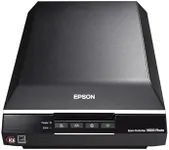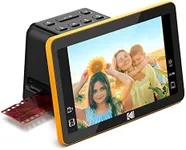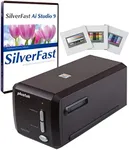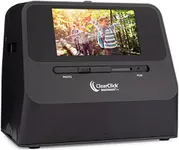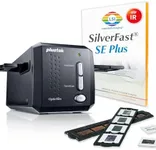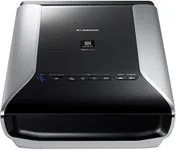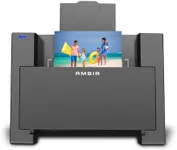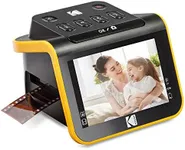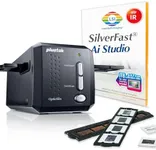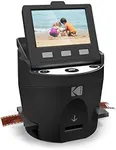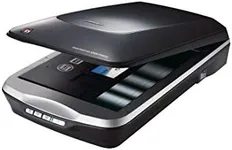Buying Guide for the Best Negative Photo Scanners
Choosing the right negative photo scanner can be a game-changer for preserving and digitizing your old film negatives. The right scanner will help you achieve high-quality digital images that can be easily stored, shared, and edited. When selecting a negative photo scanner, it's important to consider several key specifications to ensure you get the best fit for your needs.ResolutionResolution refers to the amount of detail a scanner can capture, measured in dots per inch (DPI). Higher resolution means more detail and sharper images. For general use, a resolution of 2400 DPI is usually sufficient. If you plan to make large prints or need professional-quality scans, look for scanners with 4800 DPI or higher. Consider your end use: if you need high-quality prints or detailed digital archives, opt for higher resolution.
Color DepthColor depth indicates the number of colors a scanner can capture, measured in bits. Higher color depth results in more accurate and vibrant colors. Scanners typically offer 24-bit or 48-bit color depth. For everyday scanning, 24-bit is adequate, but for professional use or if you want the best color accuracy, 48-bit is preferable. Think about how important color accuracy is for your scans when choosing the color depth.
Dynamic RangeDynamic range measures a scanner's ability to capture the range of tones from the darkest shadows to the brightest highlights. It's often represented by a Dmax value. A higher Dmax value means better detail in both dark and light areas. For general use, a Dmax of around 3.0 is sufficient. For professional use or if you have negatives with a lot of contrast, look for a Dmax of 4.0 or higher. Consider the quality of your negatives and how much detail you want to preserve.
Scanning SpeedScanning speed refers to how quickly a scanner can digitize your negatives. Faster scanning speeds can save you time, especially if you have a large number of negatives to scan. Scanning speed is usually measured in seconds per scan. If you have many negatives, look for a scanner with faster speeds. If you only scan occasionally, speed may be less critical. Think about your volume of work and how much time you want to spend scanning.
Software CompatibilitySoftware compatibility refers to the scanner's ability to work with different operating systems and image editing software. Good software can enhance your scanning experience with features like dust removal, color correction, and batch scanning. Ensure the scanner is compatible with your computer's operating system and any software you plan to use. Consider what software features are important to you and check compatibility before purchasing.
ConnectivityConnectivity options determine how you connect the scanner to your computer or other devices. Common options include USB, Wi-Fi, and Bluetooth. USB is standard and reliable, while Wi-Fi and Bluetooth offer wireless convenience. Choose a connectivity option that fits your setup and preferences. If you prefer a clutter-free workspace, wireless options might be better. Consider how you plan to connect and use the scanner in your environment.
Size and PortabilitySize and portability refer to the physical dimensions and weight of the scanner. If you have limited space or need to move the scanner frequently, a compact and lightweight model is ideal. Larger scanners may offer more features but require more space. Think about where you will use the scanner and how often you need to move it. Choose a size that fits your workspace and lifestyle.
